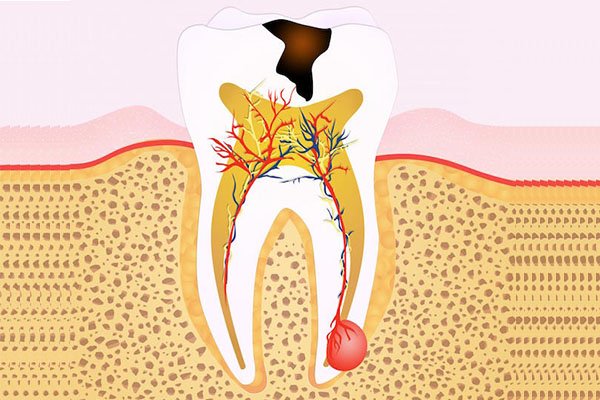Introduction
In the realm of dental care, root canal treatment stands as a crucial procedure aimed at salvaging a severely damaged or infected tooth. Understanding the intricacies of this treatment is essential for anyone facing the prospect of undergoing it. Let’s delve into the depths of root canal treatment, exploring its significance, process, and aftermath.
What is Root Canal Treatment?
Root canal treatment, often simply referred to as a root canal, is a dental procedure designed to remove infected or damaged pulp from within a tooth, thereby relieving pain and preventing further infection or decay.
Importance of Root Canal Treatment
Root canal treatment plays a pivotal role in preserving natural teeth, alleviating pain, and preventing the spread of infection to surrounding tissues. Without timely intervention, an infected tooth may lead to more severe oral health issues, including abscess formation and bone loss.
Types and Categories
Root canal treatments can vary depending on the extent of damage or infection present in the tooth. Here are some common types:
Primary Root Canal Treatment
This type of root canal treatment addresses the infection or damage within the tooth’s pulp chamber and root canals without the need for additional procedures.
Root Canal Retreatment
In cases where a previous root canal treatment fails to resolve the issue or if reinfection occurs, a retreatment may be necessary to clean and seal the canals effectively.
Apicoectomy
Also known as root-end resection, an apicoectomy involves the removal of the tooth’s tip (apex) and surrounding infected tissue to eradicate persistent infection.
Symptoms and Signs
Recognizing the symptoms of a tooth in need of root canal treatment is crucial for seeking timely intervention and preventing further complications.
Common Symptoms
- Persistent toothache, especially when chewing or applying pressure
- Sensitivity to hot or cold temperatures, even after the stimulus is removed
- Swelling or tenderness in the nearby gums
- Darkening or discoloration of the tooth
Uncommon Symptoms
- Prolonged sensitivity to touch or pressure
- Formation of a pimple-like bump on the gums, indicating an abscess
- Fever and general malaise in severe cases of infection
Causes and Risk Factors
Several factors can contribute to the need for root canal treatment, including:
Dental Decay
Untreated cavities can progress to infect the innermost layer of the tooth, necessitating root canal therapy to remove the decayed tissue.
Trauma or Injury
A sudden impact or injury to the tooth can cause damage to the pulp, leading to inflammation or infection.
Previous Dental Procedures
Repeated dental procedures on the same tooth or extensive dental work can increase the risk of pulp damage and the need for root canal treatment.
Poor Oral Hygiene
Inadequate oral hygiene practices can facilitate the buildup of plaque and bacteria, increasing the likelihood of tooth decay and infection.
Diagnosis and Tests
Diagnosing the need for root canal treatment involves a comprehensive evaluation by a dentist or endodontist, typically including the following steps:
Clinical Examination
The dentist assesses the tooth’s condition, looking for signs of infection, decay, or damage.
X-rays
X-ray images help visualize the internal structure of the tooth and identify any abnormalities in the pulp or surrounding bone.
Pulp Vitality Tests
Various tests, such as temperature sensitivity or electric pulp testing, may be performed to determine the vitality of the tooth’s pulp.
Treatment Options
Root canal treatment comprises several stages aimed at eliminating infection, preserving tooth structure, and restoring oral health.
Anesthesia
Before commencing the procedure, local anesthesia is administered to ensure the patient’s comfort throughout the treatment.
Access Opening
A small opening is created in the tooth’s crown to access the pulp chamber and root canals.
Pulp Removal
Infected or inflamed pulp tissue is carefully removed from the tooth’s interior using specialized instruments.
Cleaning and Shaping
The root canals are meticulously cleaned, shaped, and disinfected to remove any remaining debris or bacteria.
Filling and Sealing
Once the canals are prepared, they are filled with a biocompatible material, typically gutta-percha, to seal the space and prevent reinfection.
Restoration
Finally, the tooth is restored with a filling or crown to reinforce its structure and functionality.
Preventive Measures
While root canal treatment effectively addresses existing issues, adopting preventive measures can help reduce the risk of future dental problems.
Maintain Oral Hygiene
Brushing twice daily, flossing regularly, and attending routine dental check-ups can prevent the buildup of plaque and bacteria that lead to decay and infection.
Wear Protective Gear
For individuals engaged in sports or activities with a risk of dental trauma, wearing mouthguards can protect against injuries that may necessitate root canal treatment.
Avoid Crunchy or Hard Foods
Minimize the consumption of foods that can potentially damage teeth, such as hard candies or ice, to reduce the risk of dental fractures.
Personal Stories or Case Studies
Real-life experiences offer valuable insights into the impact of root canal treatment on individuals’ lives.
Sarah’s Story: Finding Relief Through Root Canal Treatment
Sarah, a busy professional, had been suffering from persistent tooth pain for weeks. Despite her initial reluctance to seek dental care due to fear of treatment, she eventually underwent root canal therapy. The procedure not only alleviated her pain but also restored her confidence in smiling and eating comfortably.
Conclusion
Root canal treatment stands as a cornerstone of modern dentistry, offering a lifeline to individuals plagued by tooth pain and infection. By understanding its significance, symptoms, and process, patients can approach the treatment with confidence, knowing they are taking proactive steps to safeguard their oral health.





